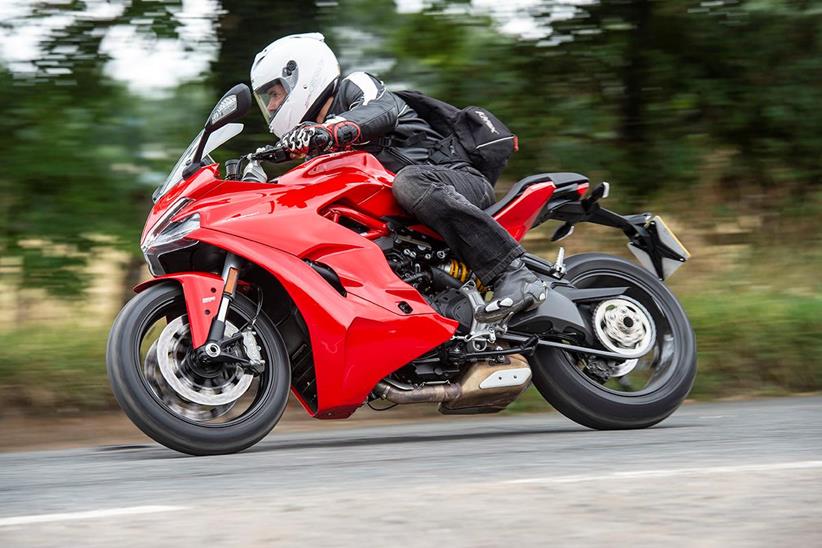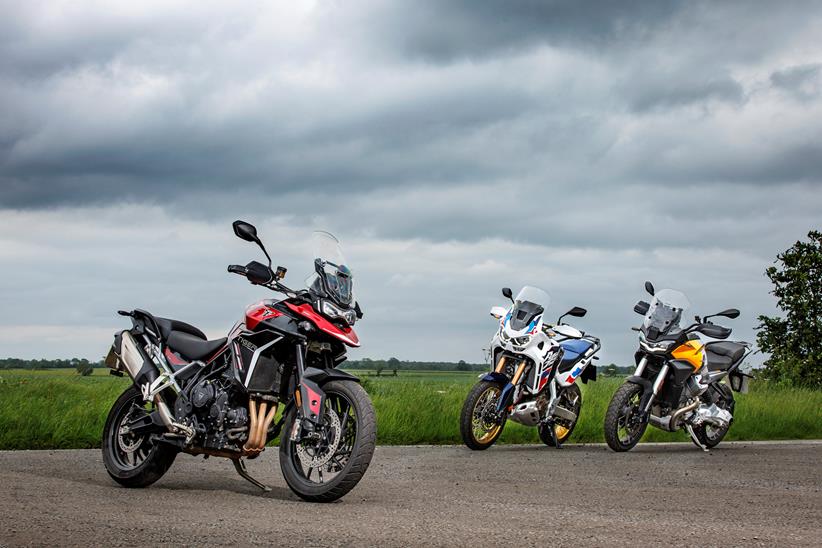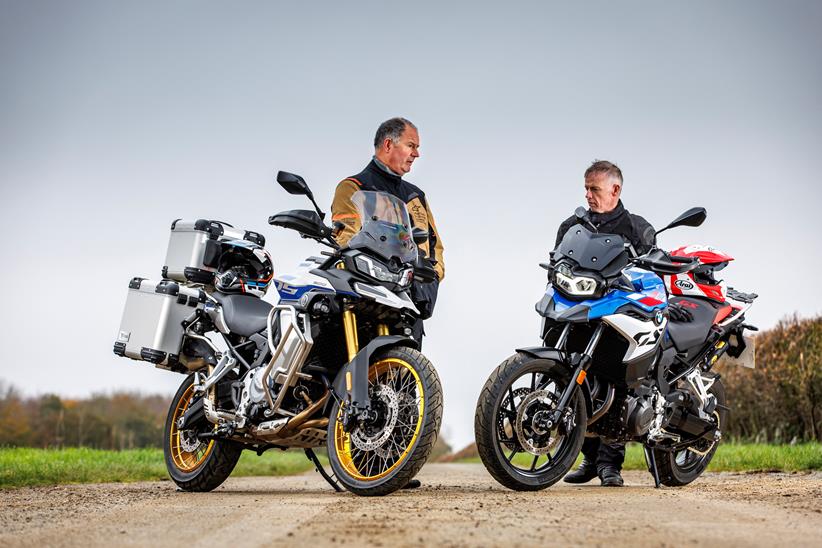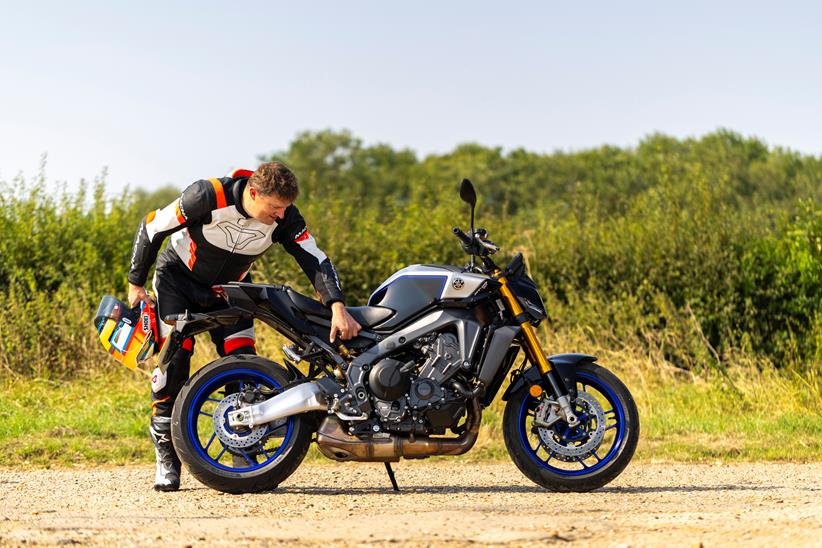How to buy a used motorcycle and not get ripped off: Your step-by-step guide to avoid buying a lemon
Buying a pre-loved motorbike is one of the most exciting experiences there is, but with so much money changing hands it can also be stressful. Buying a lemon can be costly, inconvenient or even dangerous depending on what is wrong. With that in mind, how do you know what to look out for when you’re hunting for your next steed?
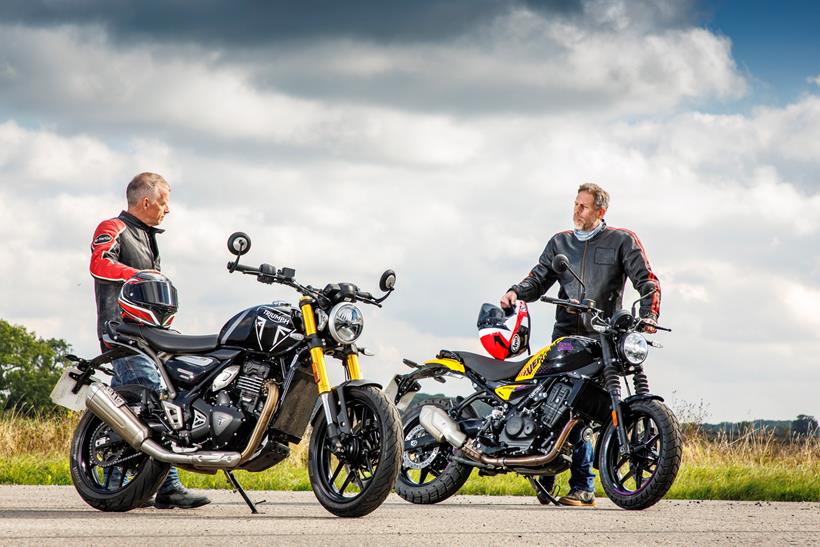
When you’ve spent weeks, months or years reading in-depth reviews and watching bike videos to decide which model to go for, and then scoured MCN for the best bikes for sale while you saved those last few pounds, it’s very easy to get over-excited when you finally see the object of your desire in the metal.
Its then easy when it’s been love at first sight to gloss over niggles and issues, forgetting to ask a question or even ignoring an obvious problem. When there is a sense of urgency to get your hands on your new bike as quickly as possible.
To try and help, MCN have pooled our collective knowledge from past experiences. Here is the complete MCN step-by-step guide to buying a used motorbike:
Jump to:
- Research – finding your first bike and making sure its the one
- Preparing – for your first viewing and ride, what you need to bring and what to ask
- After sale – getting to know your new ride
First off, do your research! How to choose the right motorcycle for you
Whether this is your first bike, and you are learning to ride, or the bike is your main mode of transport, if you are craving speed, adventure, or have your sights set on that classic biker look… Choosing a bike that resonates with you and meets your criteria is one of the hardest decisions to make.
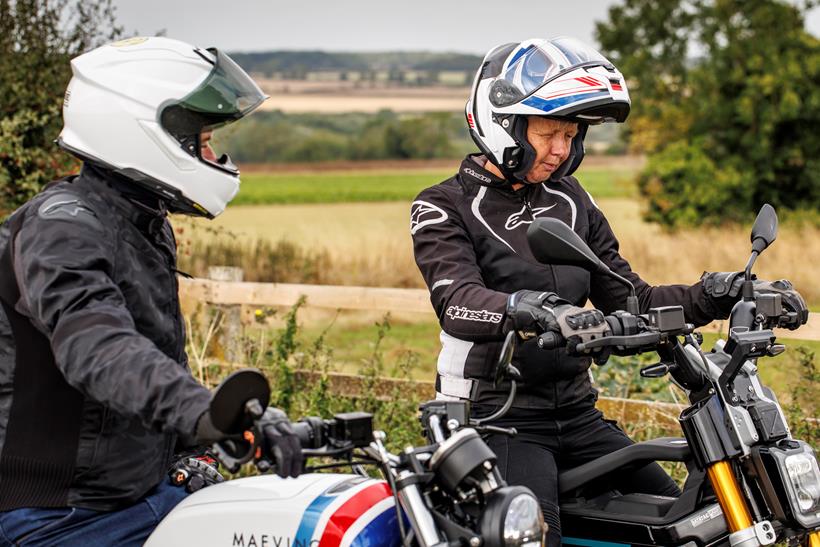
To break it down, you could explore motorbikes by type: could it be an adventure bike taking the road less travelled, or a sports tourer for travelling to distance that you are after? Or perhaps, a focused sportsbike or naked bike to carve up roads and your local track meets. It could just be as simple as putting a smile on your face and feeling cool on a café racer as you pull up to your local coffee stop.
Either way, there are no wrong answers, however there are some key requirements that can help steer you towards which bike will be best for you.
Bike weight is important, combined with seat height and overall rider ergonomics. Is it going to manageable? Will it allow you to feel comfortable when negotiating tighter manoeuvres or riding through towns?
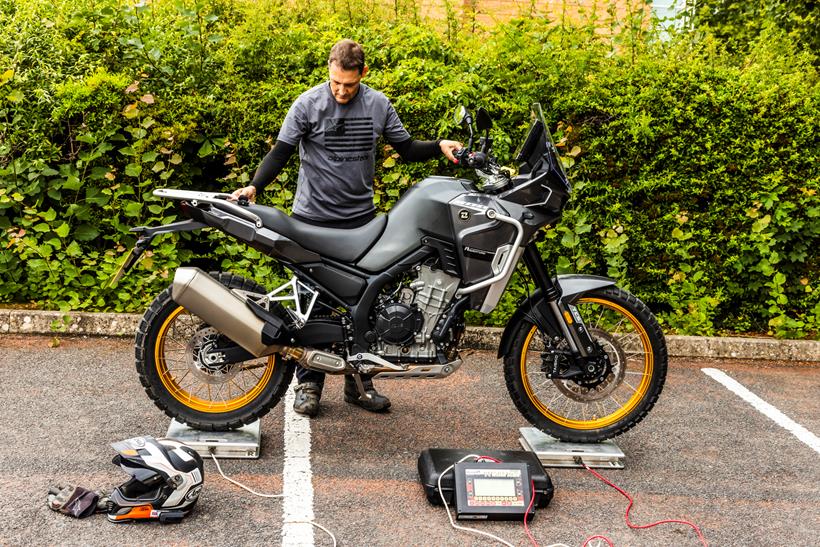
The bike’s power could be important for you too. Do you need 150bhp, when a 47bhp A2 bike will do? There is also the overarching element of passion against sensibility, be that in price or style. Would you be happy with something more practical? Or do you need to open the garage each morning, and swoon over your pride and joy even if you don’t fully utilize all 150 ponies?
How much should you spend on a used motorcycle, and how do you avoid overpaying?
Use MCN Bikes for Sale to gain an idea of the market. Take into account the bike’s year of manufacture, and additional factory parts or bling it may come with, along with aftermarket kit.
Although a seller will never see a return on the value of the additional kit they bought, they may inflate the price of the bike as a package to include it all. It makes for a great discount for yourself instead of buying it all new, or a great bargaining chip should you not want any of it.
Buying your first bike on a budget
If you’re feeling overwhelmed by the possible pitfalls of buying a used motorbike, it can be tempting to go for a cheap, new bike from one of the new or lesser known manufacturers.
When buying a bike from a less established manufacturer, you need to consider a few extra elements that you wouldn’t with Honda or Yamaha.

The most obvious is dealer back-up and spares availability. If the importer goes out of business for any reason, then chances are the dealers will stop stocking spares for the bike.
If the bike is a copy of an existing Japanese model then lots of the parts should be interchangeable, but if it’s an original design you could be stuck. So, make sure you ask searching questions about the set-up and satisfy yourself that the dealer is going to still be there to help you through the lifetime of your ownership of that bike.
Unfinished projects or a neglected pride and joy
MCN Used Bike Expert, Neil Murray offered the following advice about buying from older sellers who have lost interest in riding or are no longer able to do it.
“Demographics being what they are, there are quite a lot of machines coming up for sale, and the adverts declare that the owner is now too old or infirm to continue motorcycling. Or the bike was stashed away as a project which never got finished, for all the usual reasons (I’ve got two of that sort of bike).
“The trouble is that so many people seem to have rose-tinted specs on. They fondly remember the bike in its heyday, before it was stashed away, and somehow just forget or overlook what was wrong with it.
“Not so long ago, I bought an old classic, sight unseen, and had it delivered to me. And the engine had some fins broken off, which were not visible in the photos and (of course) not mentioned on the eBay auction page. When I took this up with the seller he replied that he hadn’t had the bike long and hadn’t noticed. And he then got snotty when I left neutral feedback.

- Related: Check out MCN’s list of most effective rust prevention products
“Today, I’ve just returned from an abortive buying expedition because the tank had been resprayed in the wrong shade, the panels had been painted with a stick, the kickstart lever was missing, the switchgear had been butchered, the fusebox was disintegrating, the front mudguard had been bodged on and was rubbing against the fork dust cover on one side, the seat was broken and the fork stanchions pitted.
“These weren’t attempts to deceive – the silly sod was just seeing the bike as it had been in its heyday. Get a clear description over the phone first.”
– Additional words by Neil Murray
Secondly, what to prepare for:
Before you go to visit a dealer or a private seller, you can do some valuable research online. Check out our review and owners’ reviews for the bike in question, get yourself an insurance quote so you know you won’t be over-stretching your budget, and make sure you carefully check the bike’s MoT history here for anything that looks out of place.
What documentation is needed when purchasing a motorcycle?
Before you leave your house and set a course to find your perfect bike, make sure you have a copy of your proof of insurance that allows you to ride other bikes.
Additionally when your arrive at the bike, make sure the bike has an MOT and insured by the seller, along with them being the rightful owner by providing the vehicle identification form: its V5 in the UK.
If the test ride goes well, you have checked over the bike and are happy with your discussion with the seller, then make sure you have any bank details on hand should you require them to transfer funds. As always, follow your own bank’s guidance when paying for goods.

- Related: Complete the look! get kitted out with affordable new motorcycle gear
What questions should you ask the seller?
Before you hand over any cash for those keys, there are some essential questions you should ask, in front of a witness ideally. This is because the law doesn’t require a seller to reveal sensitive information about whatever it is they are selling UNLESS the buyer ASKS the question.
Only then are they required to give a truthful answer. If they lie, that is “misrepresentation” – an offence which will allow you to take them to court successfully.
- Has it been dropped/crashed?
You should ask this even if you are buying a delivery-miles bike which looks blemish-free. Accidents will happen, even rolling across the workshop, and a used bike can hide all sorts of blemishes under a fresh coat of paint and new body panels. - Is there any finance owing on the bike?
If it is subject to a credit agreement then the finance house could make a claim to title of the bike. It’s best to get an MCN Bike Check done which will show this up. Knock the Bike Check cost off the sale price. - When was it last serviced?
A paper trail of receipts is always useful. If there aren’t any, ask yourself why?
What checks should you run on the bike?
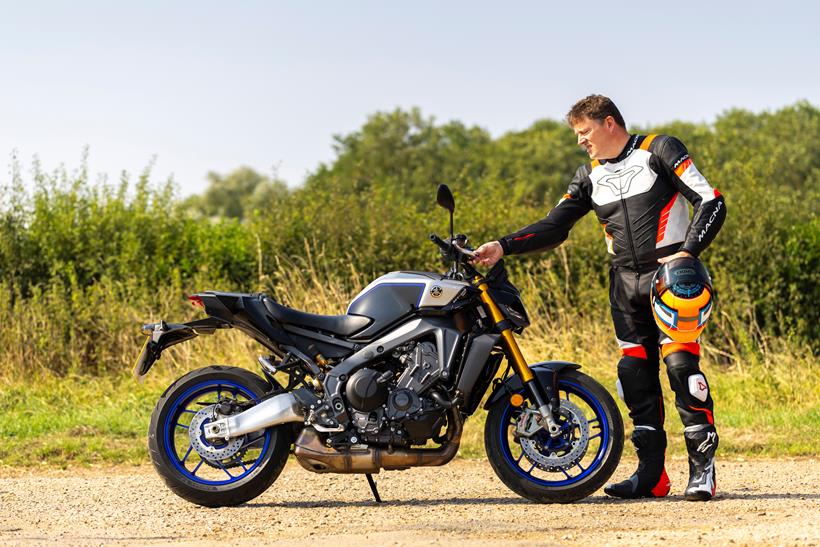
- Check the V5
The V5 is critical – it records the bike’s registration number, its date of registration, its colour, the engine number, the chassis number and the name and address of the registered keeper. If there is any discrepancy, be very careful. If either the engine or chassis number is not as recorded on the V5, walk away. - Is it warm?
Be suspicious if the bike is already warmed-up when you arrive to view. It might have taken 15 minutes and a set of jump leads to get it going. Arriving half an hour early is a good way of preventing this. - Number tampering
Always check the frame and engine numbers for any sign of tampering. Look at the rivets of the VIN plate to see if it might have been removed and replaced.

- Lock stop impacts
Check the lock stops for signs of impact. These are very hard to repair or replace, and are a sure-fire giveaway of a shunt, even if all the bodywork is nice and shiny and the forks straight. - Get on your knees
Look underneath the bike. Seriously. This is where exhausts rot, or oil leaks start. Are there signs of a weep by the oil drain plug? That’ll be because some idiot has stripped the thread and replaced the plug with a layer of added PTFE tape. - Check the electrics
Electrics – take a multimeter and check the charging rate. A brand-new battery will start the bike OK, but if it’s still registering 12.7 or so volts across the terminals when you rev it, that means either the alternator or the regulator/rectifier is fried. Or both.
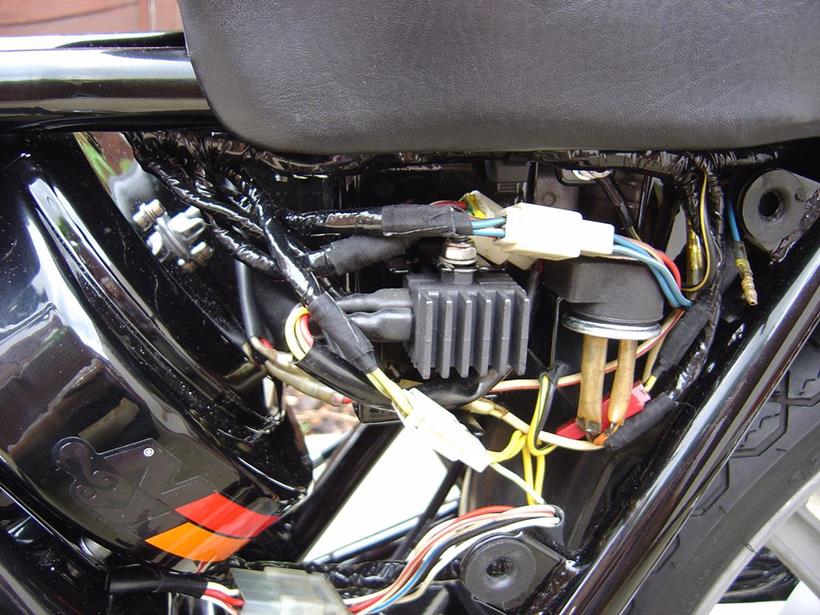
- Have a good feel
Run your fingertips over any aftermarket stickers on the bodywork. If you feel a ridge under the sticker, that’ll be fairing damage. Also examine the gaps between the various panels – a fairing bracket distorted in a crash will throw these out, and replacement brackets are rarely cheap. - Aftermarket parts may hide damage
Aftermarket fork gaiters almost always conceal pitted forks. Likewise, aftermarket paint is generally due to crash damage. - Easy Fixes
Never assume something is an ‘easy fix’. If it is, why hasn’t it been done? Or is the seller not clued-up enough to realise there’s an issue. And remember that for every fault you spot, there will be one that you don’t.
Related articles on MCN to help with your inspection:
- What’s that noise? Diagnosing motorbike problems by sound
- Slick operation: How to change your motorbike’s oil and filter
- How to set up your motorbike’s suspension
How to test ride the bike
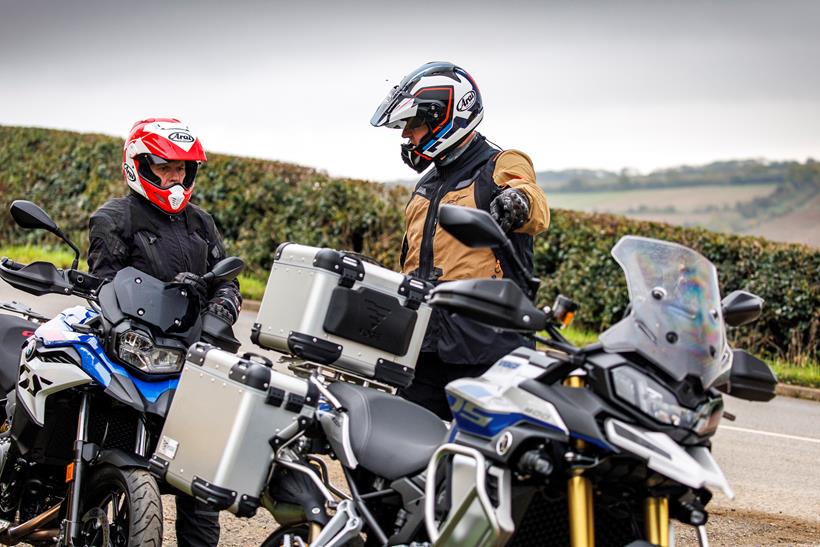
Things to consider on the day
However much preparation you do, there is nothing so telling as going out and trying it. The following should all be considered on the day you go to see your prospective new ride.
What to look for in a test ride
- If you’re looking at a bike to buy and you’ve given it a good once over, ask for a ride to make sure nothing feels out of place
- This may not be so easy if you’re buying privately and you may have to leave a deposit while you’re on the ride. At the very least, you should get a pillion ride
- Check for smooth acceleration, good performance (relative to the bike you are riding), and no surprises in the handling
- Make sure the bike doesn’t pull to one side or the other under acceleration (hold the bars very lightly in your hands on a smooth stretch of road and see), and that it steers smoothly and brakes in a straight line. Listen for any unusual noises or vibrations
- Everything should work once on the move – check gears, clutch and brake operation as well as things like the speedo, rev-counter and digital display. Try every single switch and function to make sure it works, including all rider modes and settings if they apply
Thirdly, after the sale, what’s next?
Things to check after buying a second hand bike
So, you’ve done all the necessary checks, handed over your cash, found the best insurance deal through MCN Compare and now you own a brand new (to you) second hand bike. Congratulations!
But before you take it out for a thrash, spend a few minutes giving it a quick safety check in the comfort of your own garage. The bike may look clean and shiny, but do you really know anything about its service history?
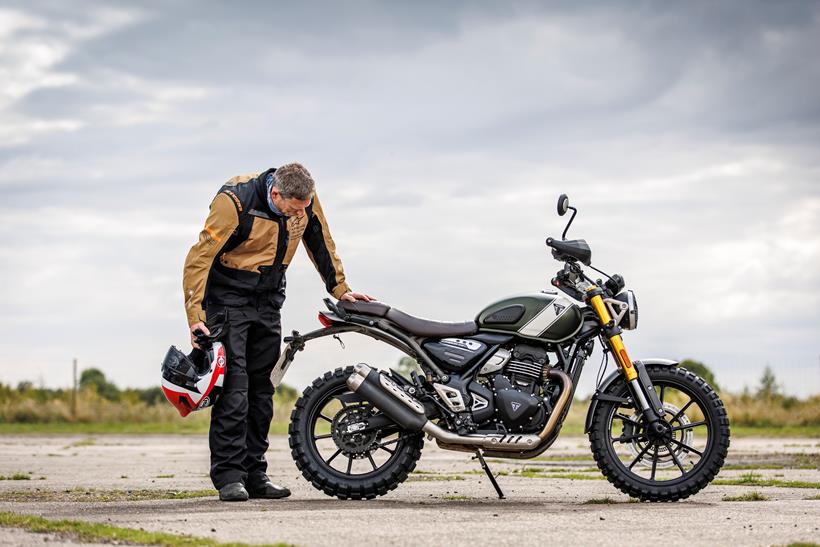
- Related: Check out MCN’s list of best motorcycle cleaning products
The most important parts to check are the brakes. Get on your hands and knees and with the help of a torch ensure the pads have some life in them. You will be amazed at the number of people who only discover their pads are shot when they get their bike serviced.
Now look at the brake reservoir: is the fluid at the correct level and are there any signs of leakage? When you’re happy with your brakes, look at the tyres.
When you bought the bike you probably gave them a cursory glance for wear in an effort to shave a few quid off the price, now have a good look for any foreign objects in them such as a nail or stone lodged in the tread.
Now check their pressures and also adjust and lube the drive chain if necessary and look for any tight spots. If this is all good then give the bike a fluid once-over by checking the oil level is correct and also looking at the coolant level.
Finally, and again this is so often over-looked: ensure all the bike’s lights work, especially the brake light on both the hand and foot lever’s activation. Ensure the headlight is at the correct lever for your weight, too. And check the horn, although not at 10pm when the neighbour’s kids are asleep!
Happy with everything? Then it’s time to enjoy your new bike! Remember to take it steady to start with, as every bike is different and if you have upgraded in capacity, don’t get caught out by the extra power. Have fun!

